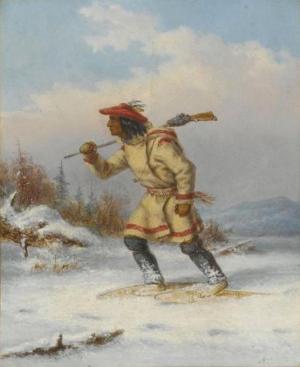Fredericksburg and Its Many Points of Interest
Nonfiction, Religion & Spirituality, New Age, History, Fiction & Literature| Author: | R. A. Kishpaugh | ISBN: | 9781465523389 |
| Publisher: | Library of Alexandria | Publication: | March 8, 2015 |
| Imprint: | Language: | English |
| Author: | R. A. Kishpaugh |
| ISBN: | 9781465523389 |
| Publisher: | Library of Alexandria |
| Publication: | March 8, 2015 |
| Imprint: | |
| Language: | English |
Historical Sketch. The visitor to Fredericksburg to-day finds, instead of the easy going town of ante-bellum days, an entirely new place risen from the ruins of war and time, new buildings, up-to-date streets and Other improvements making a modern city of the present generation. The object of this little book is to furnish to the traveler, facts in the history of Fredericksburg, its many places of interest as well as an up-to-date guide to the city, and to extend to all a “welcome to Fredericksburg.” The exact time the site of what is now Fredericksburg was visited by white men is not known, but the general impression is that the first trip was in 1608 (one year after the landing at Jamestown). Capt. John Smith, the true founder and father of Virginia, with a crew of twelve men and an Indian of a Potomac tribe for a guide, came to the falls of the Rappahannock just above where Fredericksburg was afterward located, and had a severe fight with the Rappahannocks, whom he described as the most courageous and formidable savages he had yet encountered. The early history of Fredericksburg is full of events[1] along the general history of the country, it being a centre of trade, the river being wider and deeper than the present day, and that ocean going barges and schooners, laden with cargoes from the West Indies, Liverpool and Other ports came to Fredericksburg, and took on for their return voyage consignments of tobacco and wheat to English and Scotch merchants. A fort was maintained near the falls of the Rappahannock, and with 250 men the town was legally founded in 1727 and was named for Frederick, son of George the Second. Before the introduction of railroads, trade was carried on by what was known as “Road Wagons.” These wagons were of huge dimensions, their curved bodies being, before and behind, at least twelve feet from the ground. They had canvas covers and were drawn by four and often six horses. During the period from 1800 to the civil war, as many as three hundred was often seen on the streets and in the wagon yards of Fredericksburg at one time. The country, to the Blue Ridge mountains, even to counties in the Valley of Virginia, was thus supplied from Fredericksburg
Historical Sketch. The visitor to Fredericksburg to-day finds, instead of the easy going town of ante-bellum days, an entirely new place risen from the ruins of war and time, new buildings, up-to-date streets and Other improvements making a modern city of the present generation. The object of this little book is to furnish to the traveler, facts in the history of Fredericksburg, its many places of interest as well as an up-to-date guide to the city, and to extend to all a “welcome to Fredericksburg.” The exact time the site of what is now Fredericksburg was visited by white men is not known, but the general impression is that the first trip was in 1608 (one year after the landing at Jamestown). Capt. John Smith, the true founder and father of Virginia, with a crew of twelve men and an Indian of a Potomac tribe for a guide, came to the falls of the Rappahannock just above where Fredericksburg was afterward located, and had a severe fight with the Rappahannocks, whom he described as the most courageous and formidable savages he had yet encountered. The early history of Fredericksburg is full of events[1] along the general history of the country, it being a centre of trade, the river being wider and deeper than the present day, and that ocean going barges and schooners, laden with cargoes from the West Indies, Liverpool and Other ports came to Fredericksburg, and took on for their return voyage consignments of tobacco and wheat to English and Scotch merchants. A fort was maintained near the falls of the Rappahannock, and with 250 men the town was legally founded in 1727 and was named for Frederick, son of George the Second. Before the introduction of railroads, trade was carried on by what was known as “Road Wagons.” These wagons were of huge dimensions, their curved bodies being, before and behind, at least twelve feet from the ground. They had canvas covers and were drawn by four and often six horses. During the period from 1800 to the civil war, as many as three hundred was often seen on the streets and in the wagon yards of Fredericksburg at one time. The country, to the Blue Ridge mountains, even to counties in the Valley of Virginia, was thus supplied from Fredericksburg















